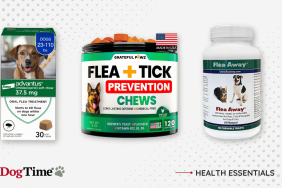Eye infection in newborn dogs happens within a couple of weeks of birth. The severity of the condition varies, but it’s vital to get it checked by a vet.
Medically, the condition is known as ophthalmia neonatorium.
If you see the signs of this condition in your pup, get to a veterinarian for a proper diagnosis and treatment.
Here’s what you should know about the symptoms, causes, and treatments for the condition.
Symptoms of Eye Infection in Newborn Dogs
The condition produces a range of symptoms. For instance, some of the most common symptoms include:
- Redness
- Swelling
- Discharge (mucus or pus)
- Vision problems
- Conjunctivitis
- Crusted eyelids
Causes of Eye Infection in Newborn Dogs

The main cause of the condition is bacteria. This usually happens during birth, when bacteria enters a puppy’s eyes.
Additionally, unclean birthing conditions and vaginal infections can also cause the condition.
You can read more about the canine pregnancy process here.
Treatments for Eye Infection in Newborn Dogs
Firstly, your vet will ask about your dog’s symptoms. Secondly, your vet will ask about the birthing process. This will also include questions about the mother dog’s health.
Thirdly, a full physical examination will be carried out. Special attention will be paid to the eyes. Also, any discharge from the eyes can be tested and analyzed.
Finally, blood and urine tests will be taken. This is so that your vet can figure out if there are any underlying conditions at play.
Treatment usually begins with a careful cleaning of the eyes. This will get rid of any discharge and crusty build up.
Next, an antibiotic ointment will normally be prescribed. Your vet will guide you through using the ointment safely.
As always, if your vet prescribes your dog any medicine, stick to the precise dose and frequency instructions. Also, complete the full course of medication even if symptoms seem to have cleared up.
Have you ever cared for a dog who suffered from this condition? How did your vet help your dog recover? Let us know in the comments section below.









